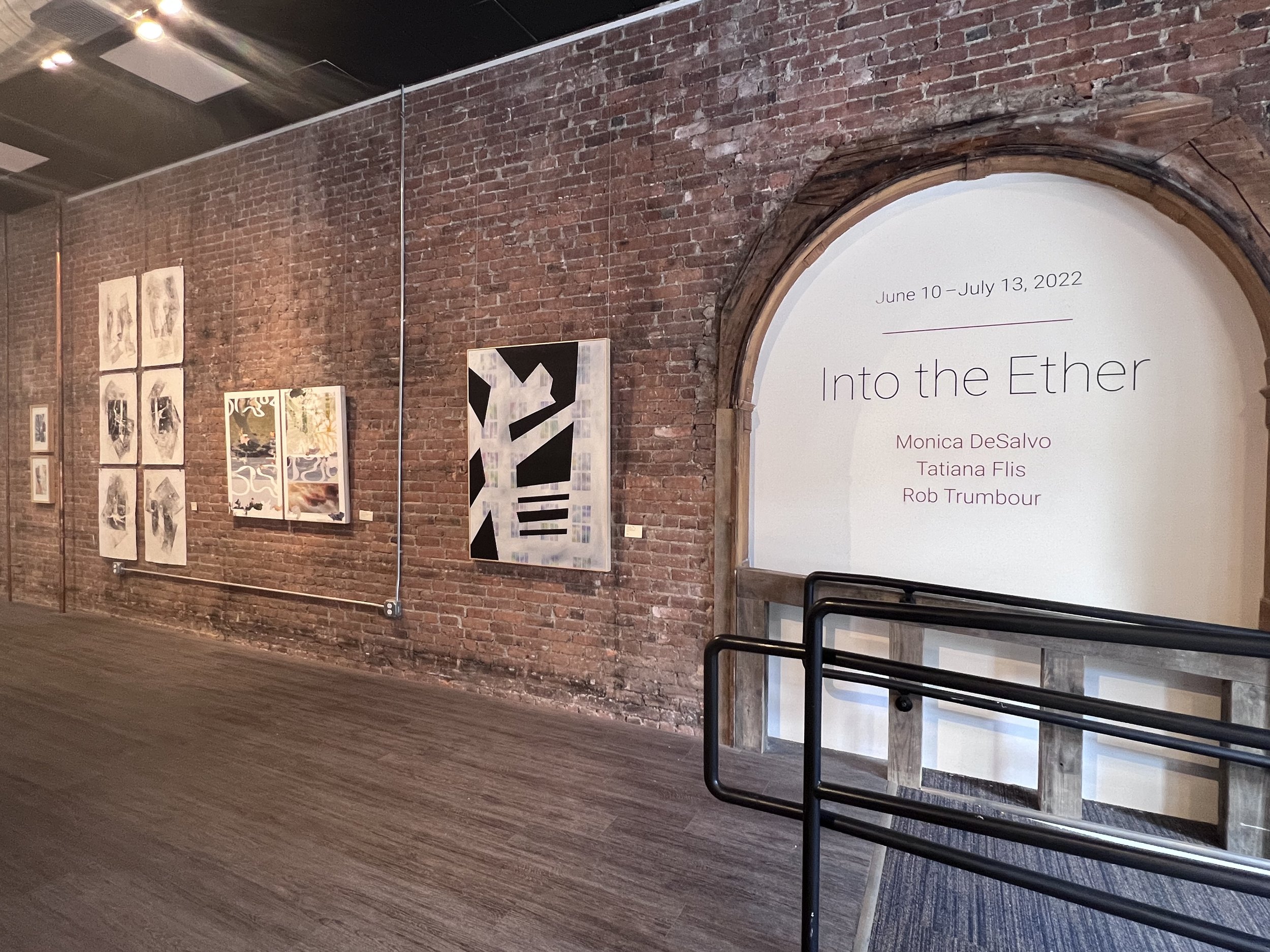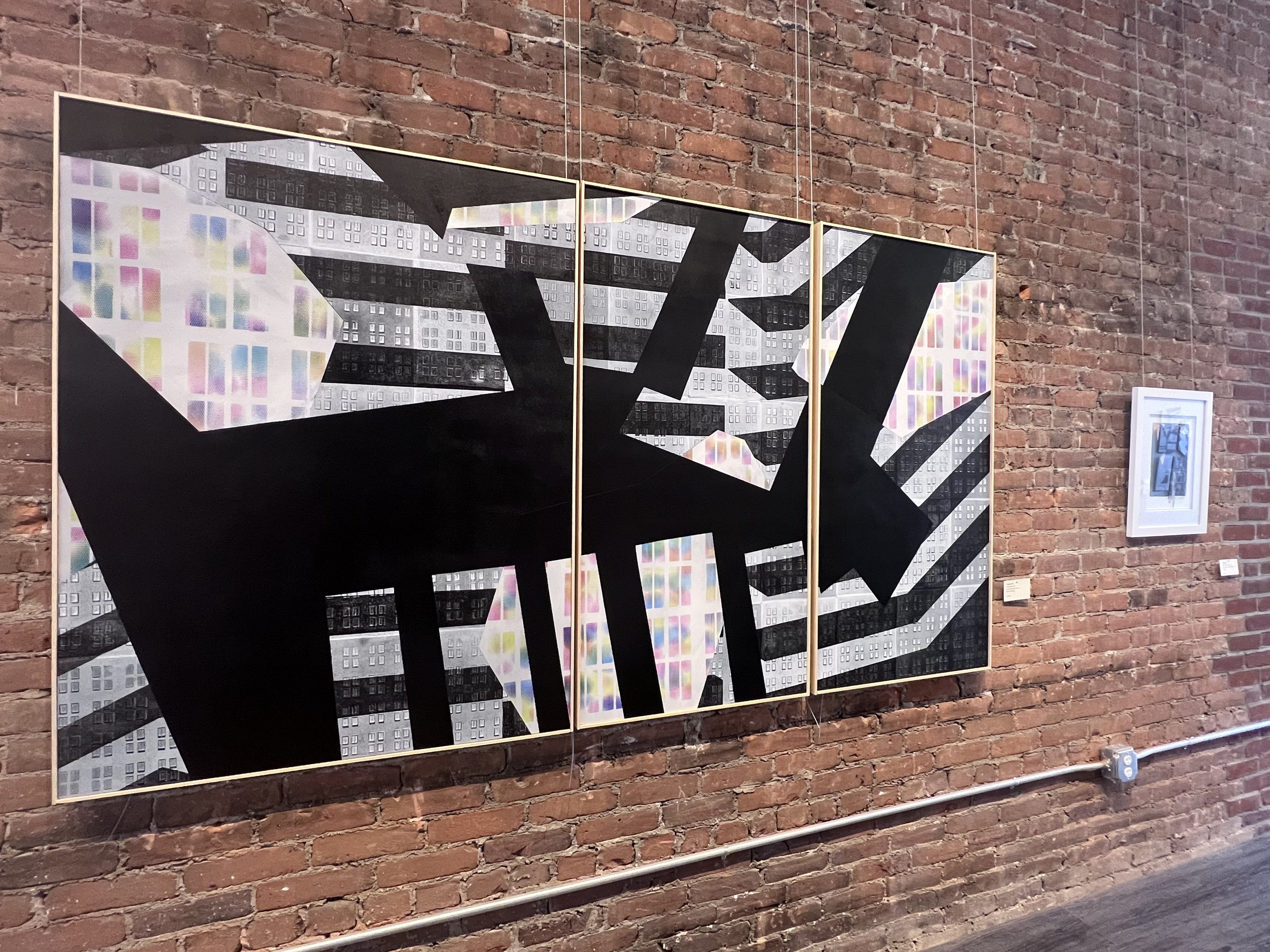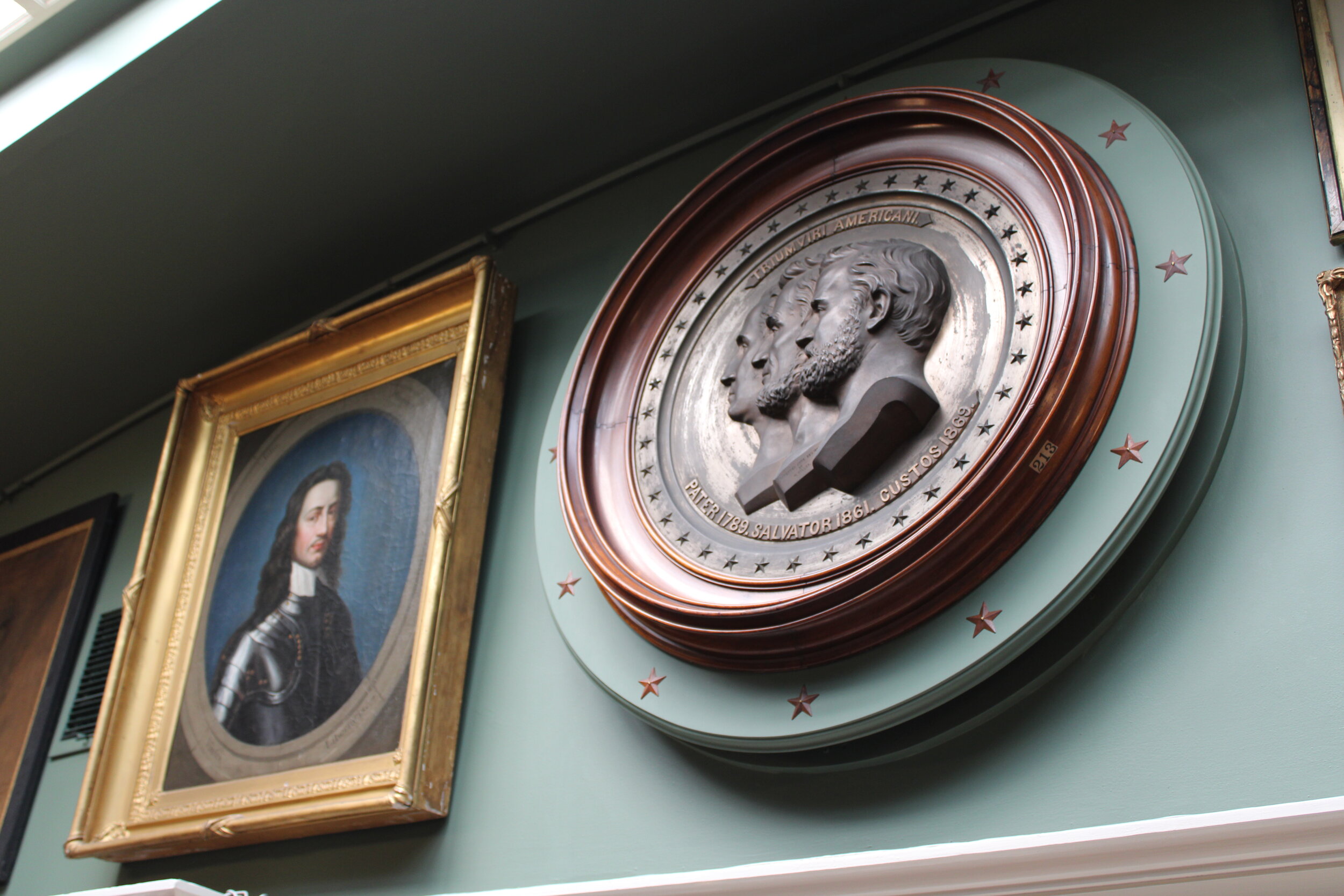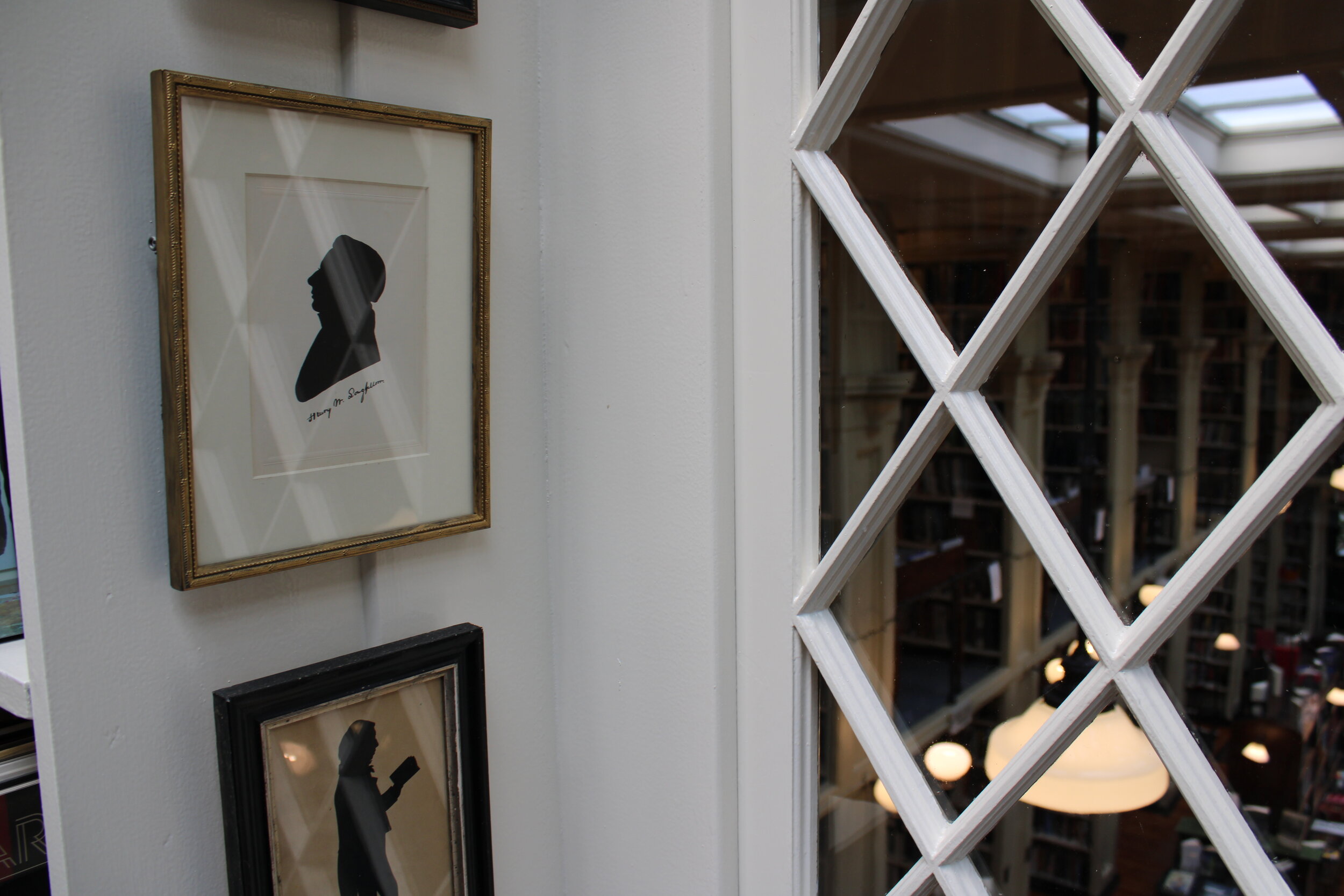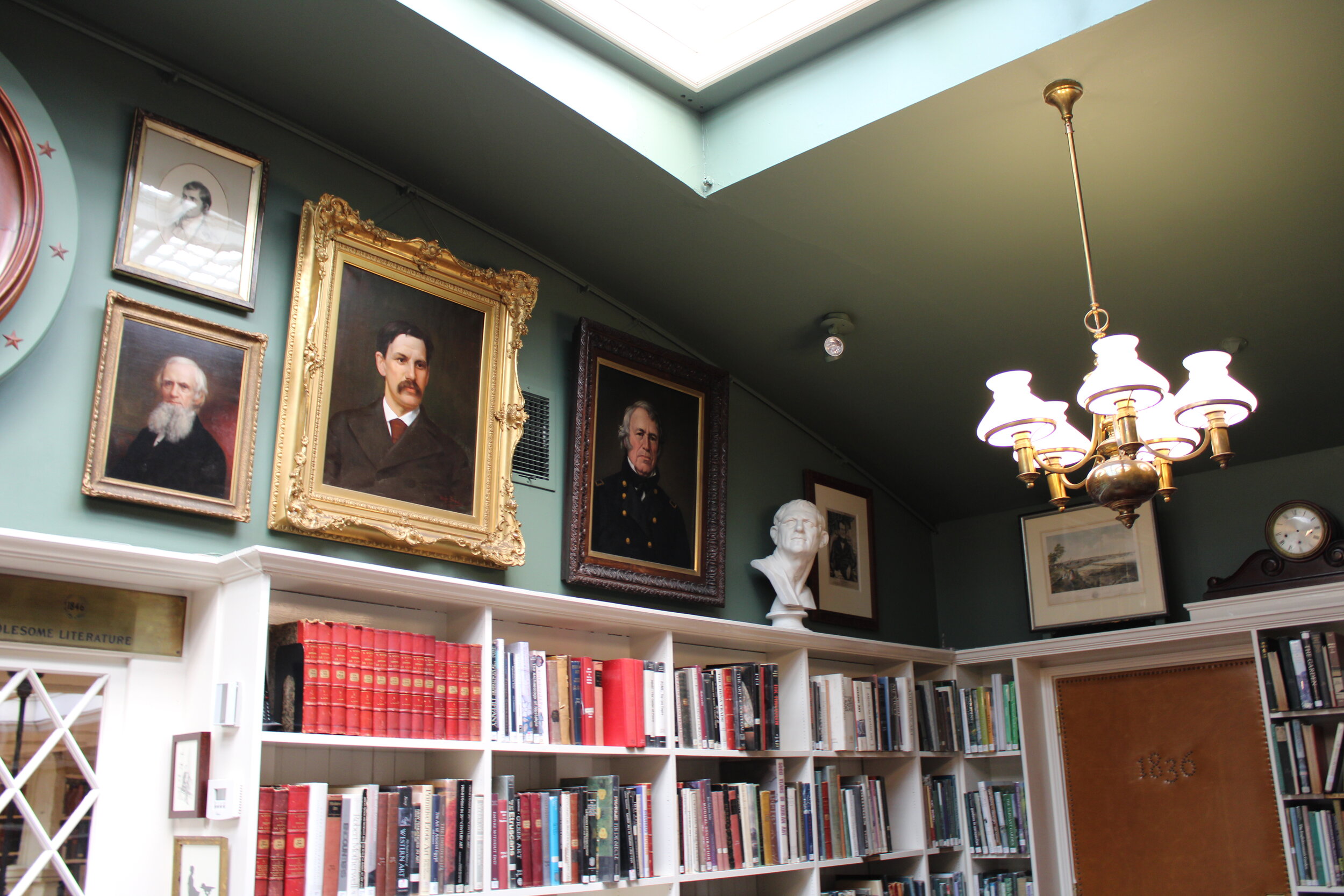While New Englanders enjoy a culturally rich region, there are always precious few opportunities for local artists to see their work exhibited in high quality spaces. Nearby Gallery in Newton, Massachusetts, was founded during the pandemic to share the work of emerging and mid-career art-makers in their community. On view through July 13, 2022, the gallery’s current exhibition Into the Ether is the product of an open curatorial call hosted by the space. The resulting show brings together works by Massachusetts artists Monica DeSalvo, Tatiana Flis, and Rob Trumbour. The exhibition is excellent and serves as a testament to the talent of the exhibiting artists as well as the vision of those behind Nearby Gallery.
Nearby Gallery’s dramatic brick clad main space sets off artworks on display.
Featuring work in a variety of media, from prints and collage to hand-made books and sculpture, Into the Ether is a survey of three artists probing issues around loss, grief, and fragility. Many of the artworks on view are achingly sensitive and entice audiences to experience them with a distinct depth of feeling.
Monica DeSalvo is an artist and graphic designer based in Arlington, Massachusetts. Much of her work is influenced by her caregiving for her late father, who experienced dementia. DeSalvo was one of the artists featured in a strong recent installment of the Attleboro Arts Museum’s lauded 8 Visions Exhibition. Into the Ether provides viewers an opportunity to see another selection of DeSalvo’s work thoughtfully presented alongside two fellow artists who also relish in craft, surface, design, and texture. One standout is her Resting on Water, a collection of ten small mixed media works that juxtapose forms and invite close examination. Lines and surfaces appear to buck and sway, throwing the viewer off course and challenging them to recalibrate. A graduate of the University of Massachusetts at Dartmouth, DeSalvo is an active exhibitor and is now a Core Member of SoWA’s Fountain Street Gallery.
Monica DeSalvo’s Resting on Water on view at Nearby Gallery.
Tatiana Flis creates works that are, like DeSalvo’s, multi-layered and incisive. The overlaps between Flis and DeSalvo tend to be a keen sensitivity towards design and construction of images. In Flis’ Prairie Night, multiple ambiguous geometries overlap and interplay across the surfaces of a large triptych. Nearby, a monoprint titled What Goes Unseen #1 sees Flis’ technique played out on a smaller scale. The installation of two works at such divergent sizes alongside one another shows off how the artist’s sense of structure, composition, and precision serves her artmaking in whatever format she chooses. Working out of a studio in Millbury, Massachusetts, Flis has exhibited widely. She completed her BFA at the Ringling College of Art and Design in Florida and earned her MFA at Cranbrook Academy of Art in Michigan.
Prairie Night and What Goes Unseen #1 by Tatiana Flis.
Rob Trumbour is both an art-maker and an architect. An associate professor at the Wentworth Institute of Technology, Trumbour earned his Master of Architecture at the University of Texas at Austin and his MFA at MassArt. His contributions to Into the Ether push boundaries and meld media from sculpture to printmaking to create a cohesive body of work. At the heart of the show, Trumbour’s Before Half of Two is a three-dimensional work that tilts into and out of space. Created using burnt out fallen tree limbs in cast concrete, the sculpture has the aroma of fire. Another strong entry by Trumbour is his collection of carbon composite prints titled Becoming, in which burnt casts are employed again. The finished pieces play with language and obsolescence. Trumbour’s work is complementary to that of Flis and DeSalvo, bringing to bear different forms of making with no less attention to detail.
Rob Trumbour’s triptych of prints titled Becoming.
Nearby Gallery bills itself as an “artist-owned showroom and community art space”, but it could also be called one of the sleekest venues in the region. A vast space by retail gallery standards, Nearby Gallery offers artists the opportunity to share their work in an environment where viewers can step back and look at things more deeply. A large open gallery at the front of the space is clad in brick, while two smaller rooms at the rear counterbalance the aesthetic with pristine white walls.
In addition to Into the Ether, a collection of works in a range of scale and style by other artists associated with the gallery are on view in their own space. The resulting installation is something akin to a contemporary salon show, celebrating many talents at once. Both the main show and this space offer works at accessible price points, with many pieces on offer at less than $500.
Another space within Nearby Gallery is dedicated to an eclectic display of many artists’ work.
Nearby Gallery’s Into the Ether offers three sensitive takes on issues of concern to many. Whether marveling at the artistic acumen of any of the three artists, or reading into their works for meditations on loss and impermanence, there is much to appreciate in this show and it is well worth seeing before it closes on July 13.
Nearby Gallery is located at 101 Union Street in Newton Centre, Massachusetts. The gallery is open Wednesday and Thursday 1-6pm, Friday and Saturday from 1-8pm, and Sunday from 11am - 4pm. Into the Ether continues through July 13. Learn more and plan your visit at www.nearbygallery.com.

